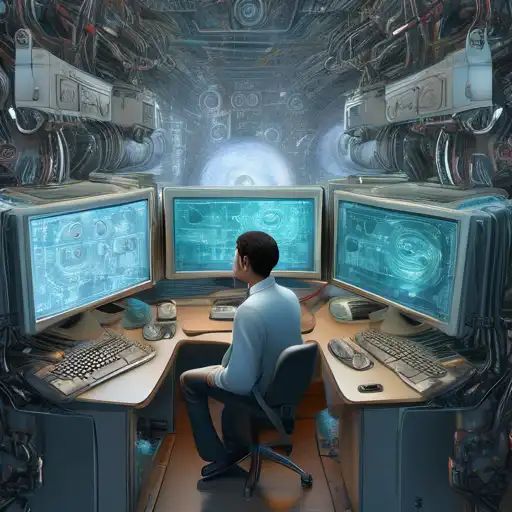Empowering Machines with Sight: The Future of Computer Vision
Computer vision is a field of artificial intelligence (AI) that enables machines to interpret and understand the visual world. By leveraging digital images from cameras and videos and deep learning models, machines can accurately identify and classify objects—and then react to what they "see."
Understanding Computer Vision
At its core, computer vision seeks to replicate the complexity of human vision. It involves the automatic extraction, analysis, and understanding of useful information from a single image or a sequence of images. This process involves acquiring, processing, analyzing, and understanding digital images to extract high-dimensional data from the real world in order to produce numerical or symbolic information.
How Computer Vision Works
Computer vision uses pattern recognition techniques to train machines to interpret the visual world. These techniques involve feeding large amounts of data into machine learning models, which then learn to recognize patterns and features in images. The process can be broken down into the following steps:
- Image acquisition: Capturing images or videos from cameras.
- Pre-processing: Enhancing image quality by reducing noise and adjusting contrast.
- Feature extraction: Identifying edges, textures, and shapes within the image.
- Detection/segmentation: Isolating objects of interest from the background.
- Recognition: Classifying the objects based on learned patterns.
Applications of Computer Vision
Computer vision has a wide range of applications across various industries. Some of the most notable include:
- Healthcare: From diagnosing diseases through medical imaging to assisting in surgeries.
- Automotive: Enabling self-driving cars to navigate safely by recognizing traffic signs, pedestrians, and other vehicles.
- Retail: Enhancing customer experience through cashier-less stores and personalized shopping recommendations.
- Security: Improving surveillance systems with facial recognition and anomaly detection.
The Future of Computer Vision
As technology advances, the potential for computer vision continues to expand. With the integration of AI and machine learning, future applications could include more sophisticated real-time video analysis, augmented reality experiences, and even more accurate medical diagnostics. The key to unlocking these possibilities lies in the continuous improvement of algorithms and the availability of large datasets for training.
Computer vision is not just about teaching machines to see; it's about enabling them to understand and interact with the world in ways that were previously unimaginable. As we move forward, the boundaries of what machines can perceive and comprehend will only continue to grow.
For more insights into the world of AI and machine learning, explore our technology section.
